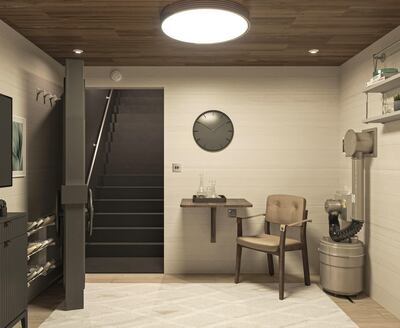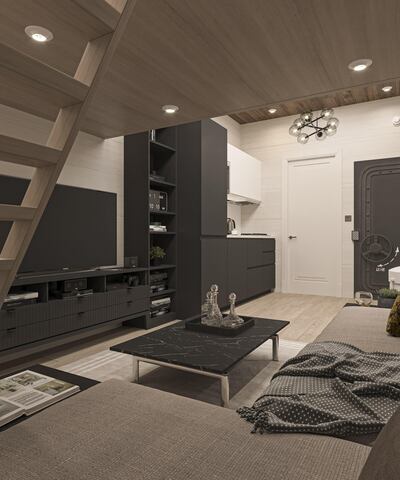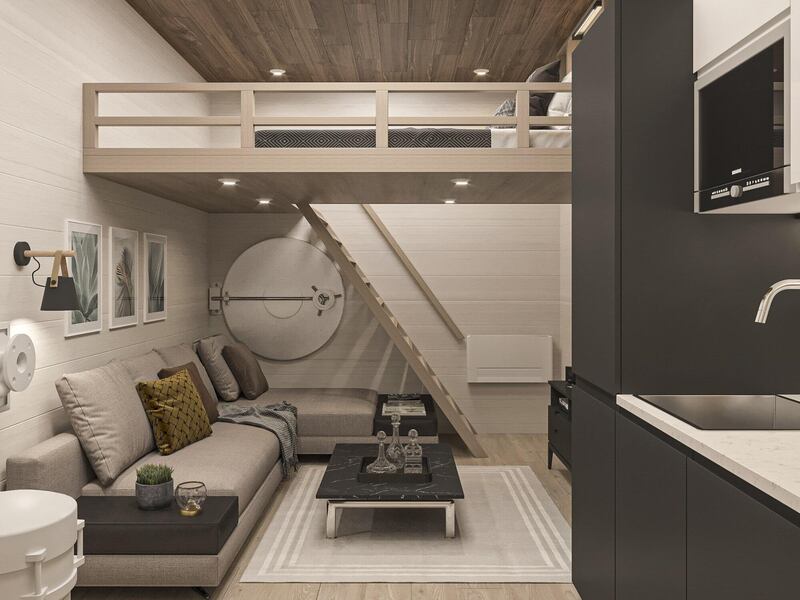Russia’s invasion of Ukraine has led to house owners across Europe scrambling to protect their safety and security, with many opting to order the installation of military-grade bunkers because of fears of attacks on their homes, or even a nuclear disaster.
A French bunker maker told The National that he had zero clients for the product, but that 1,000 customers came forward in the first weeks of the war in Ukraine. The vast majority came from French citizens planning to build private fortified structures to protect themselves and their loved ones in the event of an emergency. One trigger was the early course of the war as Russian forces captured the defunct Chernobyl plant on the first day of the invasion, stoking memories of the 1986 disaster that sent radioactive material over much of Europe.
Mathieu Seranne, founder and director of Artemis Protection, said after launching his company in January 2021 business struggled to get off the ground. Fast forward 13 months and he has been inundated with requests from Europeans alarmed at the sudden shift in the continent’s security.
“We started from zero. My company was built more than a year ago and we did not sell one [bunker] before the war began. During the first weeks of the war we received over 1,000 requests for quotations,” Mr Seranne told The National.
“They were not panicked, really, they were really rational people.

“They were not afraid of bombing in the gardens. What they were afraid of is that Russians took control of nuclear plants in Ukraine and that was worrying them. They were really worried that something would explode.
“What we heard a lot was they wanted to make an investment, they wanted to make an extension of their homes, an extension that would be able to [resist] a bomb, a missile of some sorts, a chemical leak of some sort.
“Even though the war in Ukraine is about Ukraine at the moment, everyone is concerned about the use of a nuclear weapon.”
While a large proportion of potential clients are French, he has also had interest from people in the UK, Ireland, Spain, Germany, Poland and Bulgaria.
Russia’s bombing of Ukrainian cities and towns has forced countless people to live underground for weeks on end, many of whom have little access to water and food. But not all households and communities have access to secure underground locations and many have perished in their own homes.
Mr Seranne said Russia’s assault on Ukraine had prompted several construction companies in the former Soviet nation to contact him requesting partnerships. Companies who had until the invasion built only homes and commercial buildings are now trying to break into the bunker market in an attempt to offer Ukrainians a place, close to their homes, to hide from missiles.
“They do not have experience in [building] bunkers,” Mr Seranne said. “We will have to share our knowledge, but they are big general construction companies and they are well aware of what they do there.
“What we saw was people wanted to have something really quickly, not a big thing, just to take shelter for a short period of time.”
Such was the demand for bunkers among middle-income French households that he brought in a budget bunker to offer them a more affordable option.
Artemis introduced a compact bunker model, which measures three metres x 2.5 metres and costs £125,000 ($156,423). While it is not as spacious as the more luxurious bunkers on offer, it includes the basics — a military-grade ventilation system that allows air in while filtering out chemicals, radiation and Covid-19, and an emergency exit.
“In the event of an explosion outside, what is going on is the pressure of air is going to be very different, in the same way as if you are in a plane and a window breaks your lungs are going to explode, so we have to have a very pressurised shelter,” Mr Seranne said.
“We were aiming at the luxury market before and when we received hundreds and hundreds of requests we saw that people didn’t have that kind of money so we needed to adapt to this kind of market.”
Customers can get into the bunker via metal stairs and through a hatch door, which is both gas and fire proof.
The steel structures take a matter of weeks to assemble and are transported to clients’ homes to be buried in gardens or nearby sites. Mr Seranne said the process is much shorter than the length of time it takes to build a concrete structure.

The company also plans to sell multi-room bunkers to customers in the Middle East. These, it claims, make the average structure look like a rabbit hole. Mr Seranne said the prices for big complexes go into “millions of euros”.







